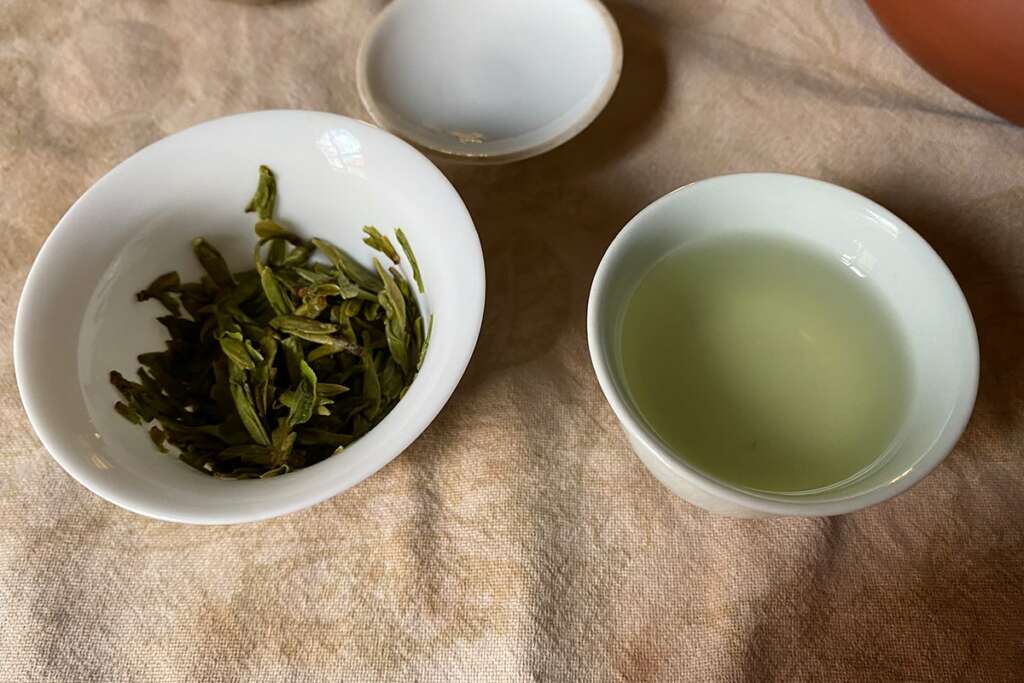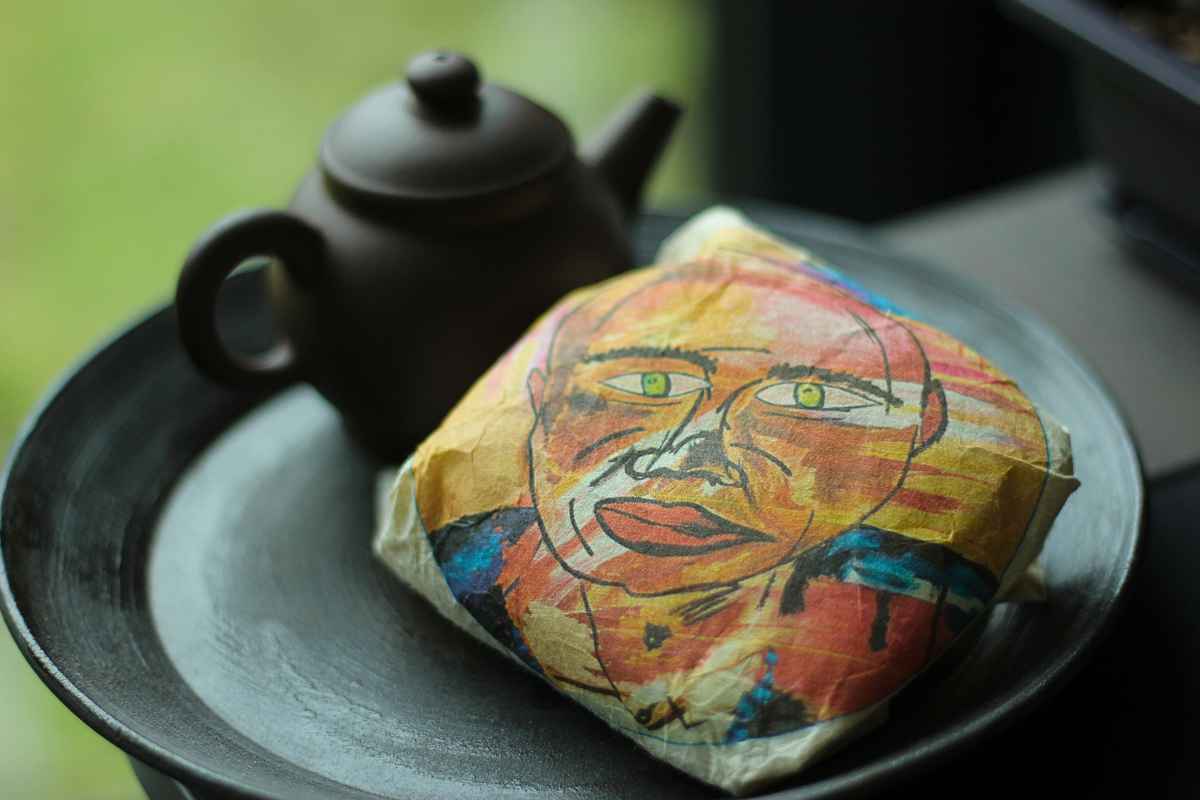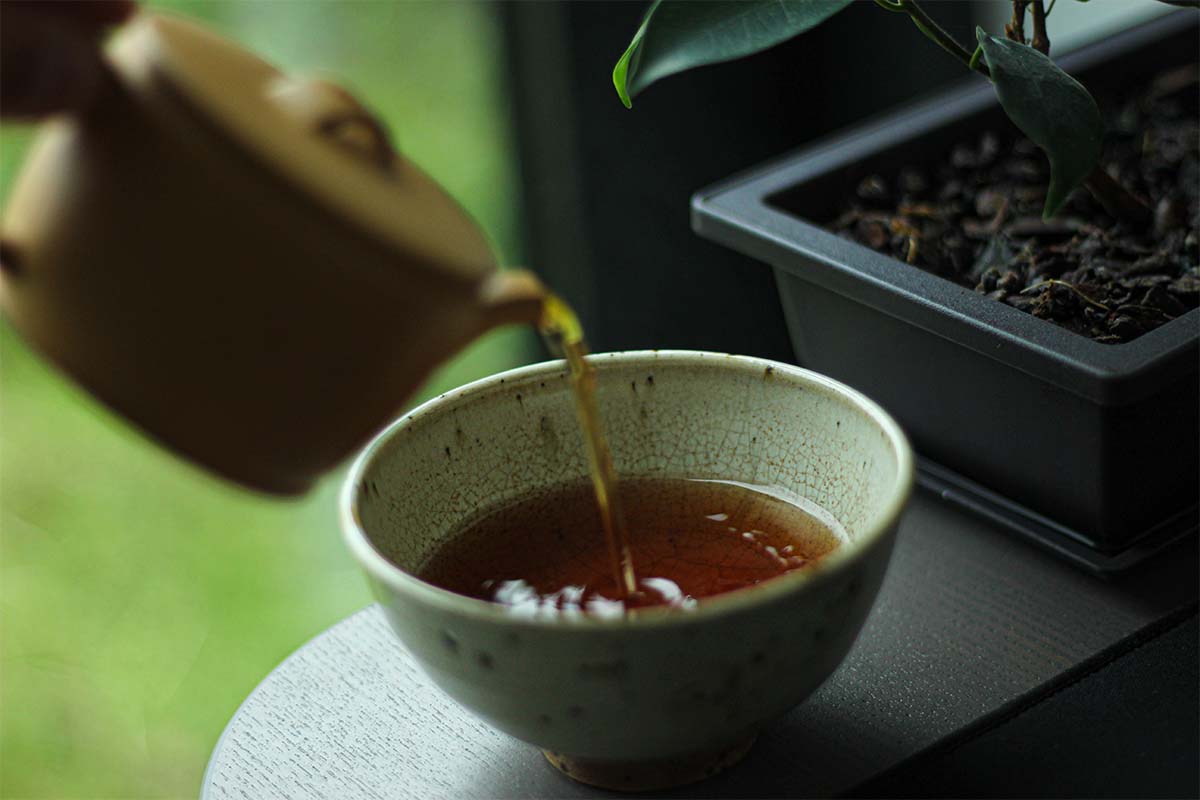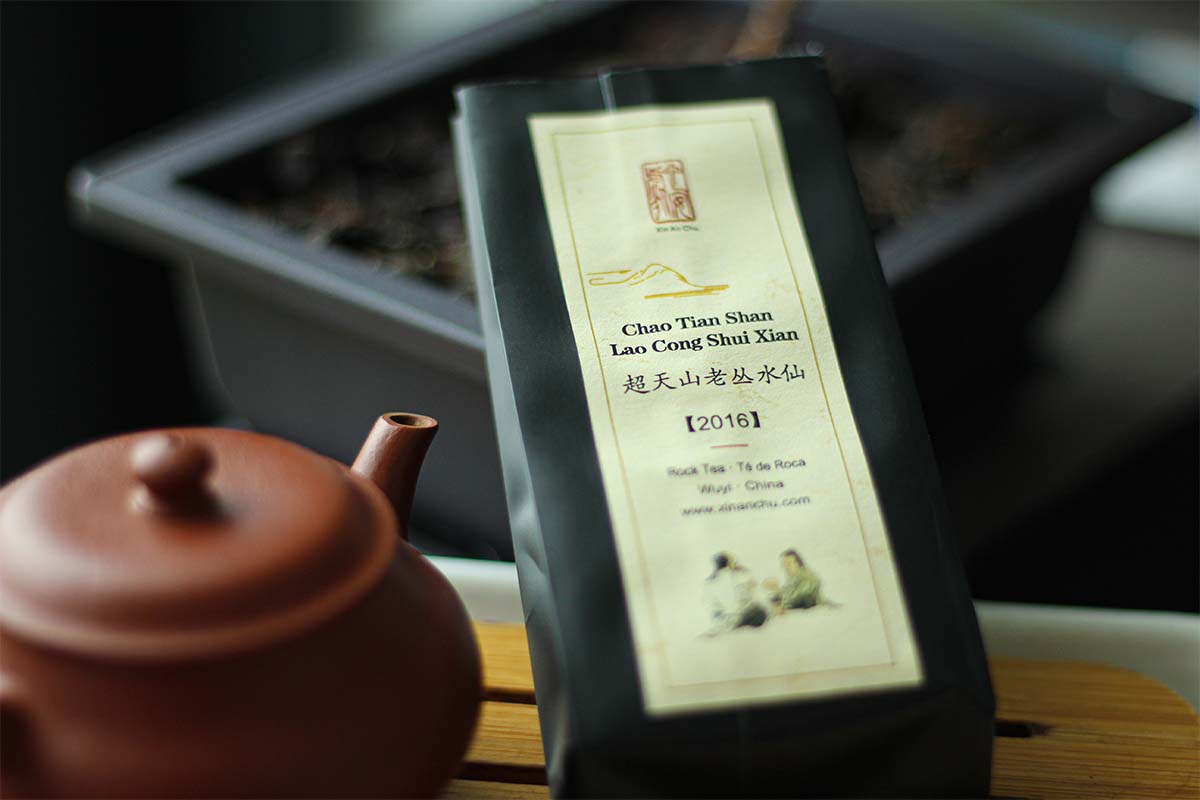It feels like spring is here and that made me drink a kind of tea I haven’t drunk in a while. I went for a Xihu Longjing because that is the type of tea I drank when I started drinking loose leaf tea. It really takes me back a few years. Every time I drink this tea, it always reminds me of spring. This one was kindly sent to me by Hey China Tea.
Xihu Longjing
Longjing green tea is known for its shape, colour and distinctive taste. Back when I started out, this was my favourite type of tea. I didn’t know much back then, only that ‘real’ Longjing comes from China’s Zhejiang province. The best quality Longjing comes from the West Lake (Xihu) area in Hangzhou. In this area, there are several different tea plantations and this particular Xihu Longjing is from 2020 and comes from Meijiawu village.
This plantation produces high-quality Longjing teas (just like Shifeng peak). The cultivar of this tea is No.43 and it was picked before the Qingming festival. This tea is also called a ‘Mingqian’ Longjing tea because it’s more tender and fresher than most other Longjing.
Tea Tasting
- 80°C water
- 4g for a 80ml porcelain gaiwan
The leaves of this Xihu Longjing have a typical Longjing shape: flat leaves that are medium-sized. There is also some ‘fluff’ on the leaves and inside the bag. It’s a uniform green colour with a yellowish hue. The aroma is super nutty with a touch of brown sugar.

Infusion 1 (10 sec): the liquor has a very light green colour. It’s really fresh when it touches my tongue, so almost like a very early spring day on the tip of my tongue. After this initial freshness, it becomes sweeter. From the middle towards the finish, some nutty flavours are popping up as well. The aftertaste lasts long and is fairly intense; it’s sweet and nutty.
Infusion 2 (15 sec): the colour is greener. This one tastes less nutty and there is a touch of umami. It feels brothy and gets more verdant towards the finish. The aftertaste is still long-lasting and sweet. It is even sweeter than the actual infusion.
Infusion 3 (20 sec): there is a fresh and green undertone, but there is also a sweetness going on. It definitely feels like spring. Towards the finish, nutty flavours are coming through and are really noticeable in the aftertaste.
Infusion 4 (20 sec): I did another infusion of 20 seconds because I was afraid it might become too fresh. In general, the flavours are less intense. When I really look for it, I’m getting a touch of sweetness. The aftertaste is sweet and nutty.
Infusion 5 (30 sec): this one feels more intense. It has shifted from fresher notes of spring to more mellow and sweeter notes of early summer. The aftertaste is still sweet and nutty.
Infusion 6 (40 sec): the flavours have faded a bit and have become fresher again. I’m only getting a faint nuttiness and sweetness in the aftertaste.
Conclusion
This Xihu Longjing was a really interesting tea. I expected it to be sweeter and nuttier (based on the aroma), but this was not really the case. It was mainly a fresh and more verdant tea and it felt like spring in my mouth. Like a sunny day in early April; nice and sunny but it can still be chilly. This is exactly what this tea was about; in a good way, of course.
The aftertaste was nuttier and sweeter than the actual infusion, which was really interesting. I had a lot of fun tasting this tea. It is not something I would go for because I prefer my Longjing a bit sweeter and nuttier. However, I feel this one is of high quality because flavours were nice and full, while being subtle at the same time.
If you want to try this Xihu Longjing, you can buy it over here.




